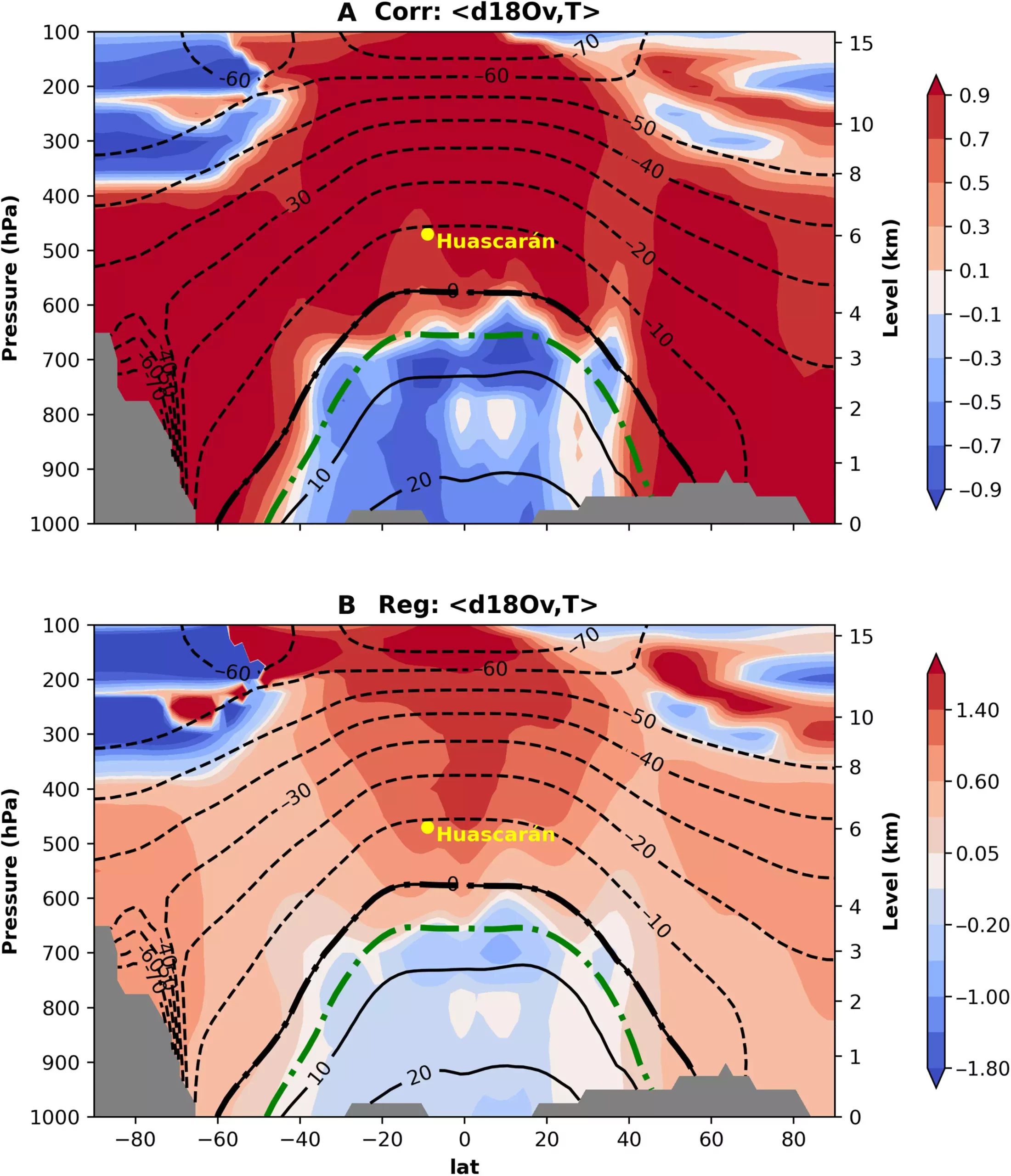Ice recovered from high tropical mountains has recently become the focus of a groundbreaking study that offers valuable insights into Earth’s past climate changes. Conducted by researchers at The Ohio State University, this study revealed that oxygen-stable isotope records found in tropical mountain glacier ice cores have the potential to provide scientists with a unique paleoclimate history of the middle and upper troposphere. By comparing ice core proxy records, paleoclimate simulations, modern satellite measurements, and previous climate models, the researchers discovered that the temperature in this part of the atmosphere cooled by a staggering 7.35°C during the Earth’s glacial period, which has led to new theories about climate dynamics throughout the ages.
Unlike ice cores collected from polar regions like Greenland or Antarctica, which represent extreme climates, ice cores collected from tropical regions serve as a “Goldilocks-type” indicator of global mean temperature change. The recently recovered ice core from Nevado Huascarán in Peru provides a perfect insight into Earth’s mean temperature throughout the ages. According to Professor Zhengyu Liu, the lead author of the study and a geography professor at The Ohio State University, a single ice core from the tropical region can offer a consistent and accurate record of global mean temperature. These unique ice cores are unaffected by regional warming and provide a richer source of information for measuring surface global mean temperature and its changes over time.
The study presents the first solely land-based estimate of global stage cooling, revealing how much Earth’s temperature decreased during its last glacial period. The researchers found that surface temperatures during Earth’s glacial cooling stages diminished by up to 5.9°C. The ice core from Nevado Huascarán acts as a historical “weather tower,” silently recording atmospheric history. Due to its elevation and location, records from the highest tropical ice cores are not influenced by regional features of the warming environment, making them the most accurate measurement of surface global mean temperature. This valuable information can enhance our understanding of various climate elements, including temperature responses to rapid climate change, such as the one occurring in the present and those anticipated in the future.
Tropical ice cores also offer an opportunity to study the preservation of potent greenhouse gases, such as methane. These ice cores contain bubbles where methane is trapped, serving as a historical archive of its atmospheric concentration. As methane is a powerful greenhouse gas capable of rapidly warming the atmosphere, having a tropical archive of past methane activity is crucial. Lonnie Thompson, a co-author of the study and professor of Earth sciences, highlights the importance of integrating tropical records with those from the polar regions to gain a more comprehensive understanding of Earth’s climate. These high-elevation tropical climate histories contribute significantly to advancing the field of climate research.
The study also addresses a long-standing scientific debate on how oxygen-stable isotopes in tropical ice cores can be used to interpret climate variations over time. Previous studies have examined whether tropical ice core samples primarily reflect changes in temperature or precipitation processes. The findings of this study indicate that tropical ice cores serve as records of air temperature in the mid-upper troposphere across the tropics. Furthermore, they provide evidence of global mean surface temperature during Earth’s last glacial period. This understanding of paleoclimatology can lead to improved climate models and more accurate predictions of extreme weather events.
The success of this study would not have been possible without collaboration across various disciplines. Yuntao Bao, a Ph.D. student in geography at Ohio State and co-author of the study, emphasizes the importance of collaborating with individuals from different backgrounds to gain a deeper understanding of the world. This study serves as a testament to the value of interdisciplinary research in advancing our knowledge of Earth’s climate patterns.
The study on tropical ice cores opens up exciting possibilities for understanding Earth’s past climate changes. By utilizing these unique ice cores, scientists can piece together a more accurate paleoclimate history of the middle and upper troposphere. This knowledge empowers researchers to refine climate models and make more precise predictions about extreme weather events. As ice cores continue to provide valuable insights into Earth’s past, collaborative efforts between researchers from different fields will undoubtedly play a crucial role in unraveling the mysteries of our planet’s climate.


Leave a Reply